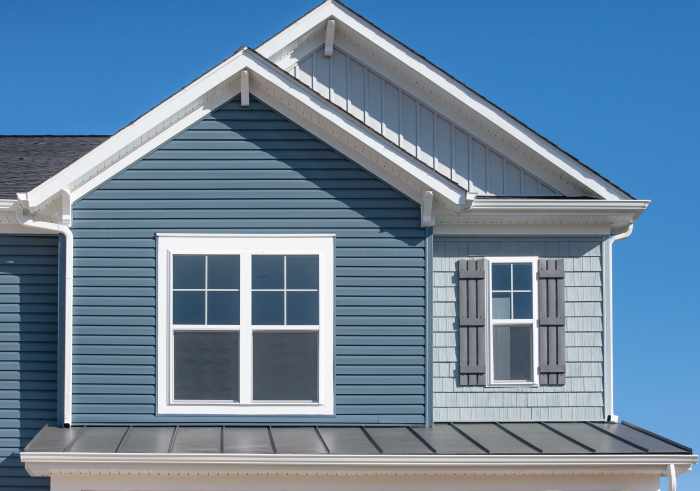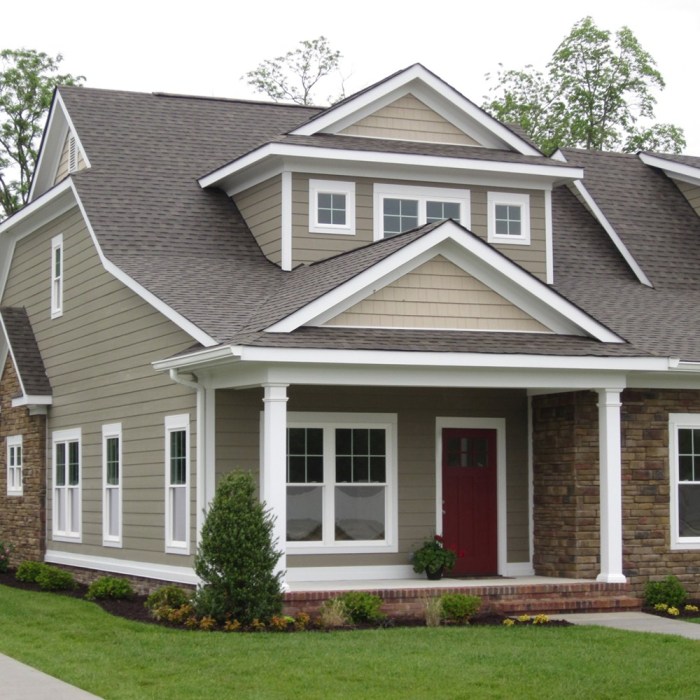Exploring Exterior Siding and Trim: A Complete Guide
Give your home’s exterior a boost by learning about different siding and trim options, how they’re installed, and the best ways to maintain them.
Types of Exterior Siding

When choosing siding, you’ll find plenty of options. Each comes with its own pros, cons, and upkeep needs. Here are some of the most common:
Vinyl Siding
Affordable and easy to maintain, vinyl siding is available in many colors and styles. It’s versatile, but it can fade or crack and isn’t as tough as other choices.
Fiber Cement Siding
Strong and long-lasting, fiber cement resists fire, pests, and rot. It can look like wood or stucco but doesn’t need as much care. The tradeoff is a higher price and the need for professional installation.
Wood Siding
Wood gives homes a warm, rustic look and can be painted or stained any color. It does, however, require regular upkeep and is vulnerable to rot and insects.
Brick Siding
Brick is timeless, durable, and adds insulation. It’s low-maintenance but expensive to install and doesn’t fit every home style.
Stone Veneer Siding
A budget-friendly way to get the look of stone, veneer is lightweight and simple to install. It looks great but can chip or crack and isn’t as durable as real stone.
Popular Trim Options

Trim adds detail and polish to your home’s exterior. It’s made from different materials, each with its own strengths:
Wood Trim
Classic and elegant, wood trim can be painted or stained but needs frequent maintenance to avoid rot or insect damage.
PVC Trim
A no-fuss option, PVC trim resists rot, moisture, and bugs. It’s durable, easy to install, and doesn’t require painting.
Composite Trim
Made from wood fibers and plastics, composite trim has the look of wood but lasts longer. It’s available in many styles and colors.
Aluminum Trim
Lightweight and rust-resistant, aluminum trim is sleek and modern. It needs little upkeep and installs easily.
Fiber Cement Trim
Durable and fire-resistant, fiber cement trim looks like wood without the common drawbacks. It resists moisture, pests, and rot, and comes in several finishes.
Installation Process
Proper installation is key to making siding last.
General Steps
- Remove old siding and repair any damage.
- Install a moisture barrier to block water.
- Add insulation for better energy efficiency.
- Measure and cut siding carefully.
- Secure it with nails or screws.
- Finish by adding trim around windows, doors, and corners.
Tips for Success
- Always follow manufacturer instructions.
- Choose quality materials.
- Seal seams and joints to prevent leaks.
- Call a professional if you’re unsure about the process.
Why Insulation and Barriers Matter
Insulation helps cut energy costs and keeps your home comfortable. Moisture barriers protect against water damage and mold. Both are essential for long-term results.
Maintenance and Repairs
Good care keeps siding and trim looking great and saves money on repairs.
Basic Maintenance
- Check often for cracks, peeling, or rot.
- Wash with mild soap and water once a year.
- Keep plants trimmed away from walls.
- Reseal caulking around windows and doors.
- Repaint or stain every few years for protection.
Common Problems & Fixes
- Rotting Wood: Replace damaged sections quickly.
- Cracked Siding: Seal or replace panels.
- Peeling Paint: Scrape, prime, and repaint.
- Mold or Mildew: Clean with a bleach solution and fix moisture issues.
Extending Lifespan
- Handle small issues before they worsen.
- Keep siding clear of dirt and debris.
- Inspect after storms or harsh weather.
- Call a pro for bigger repairs.
Final Thoughts
Choosing the right siding and trim—and keeping up with maintenance—will help your home look beautiful and stay protected for years.
FAQs
What are the most common siding materials?
Vinyl, wood, fiber cement, and metal are widely used, each with its own strengths.
What trim materials are popular?
Wood, PVC, and composite are the most common, offering different looks and upkeep levels.
What’s important during installation?
Proper insulation, a moisture barrier, and following manufacturer instructions.
How can I make siding and trim last longer?
Stay on top of cleaning, repairs, and routine maintenance.